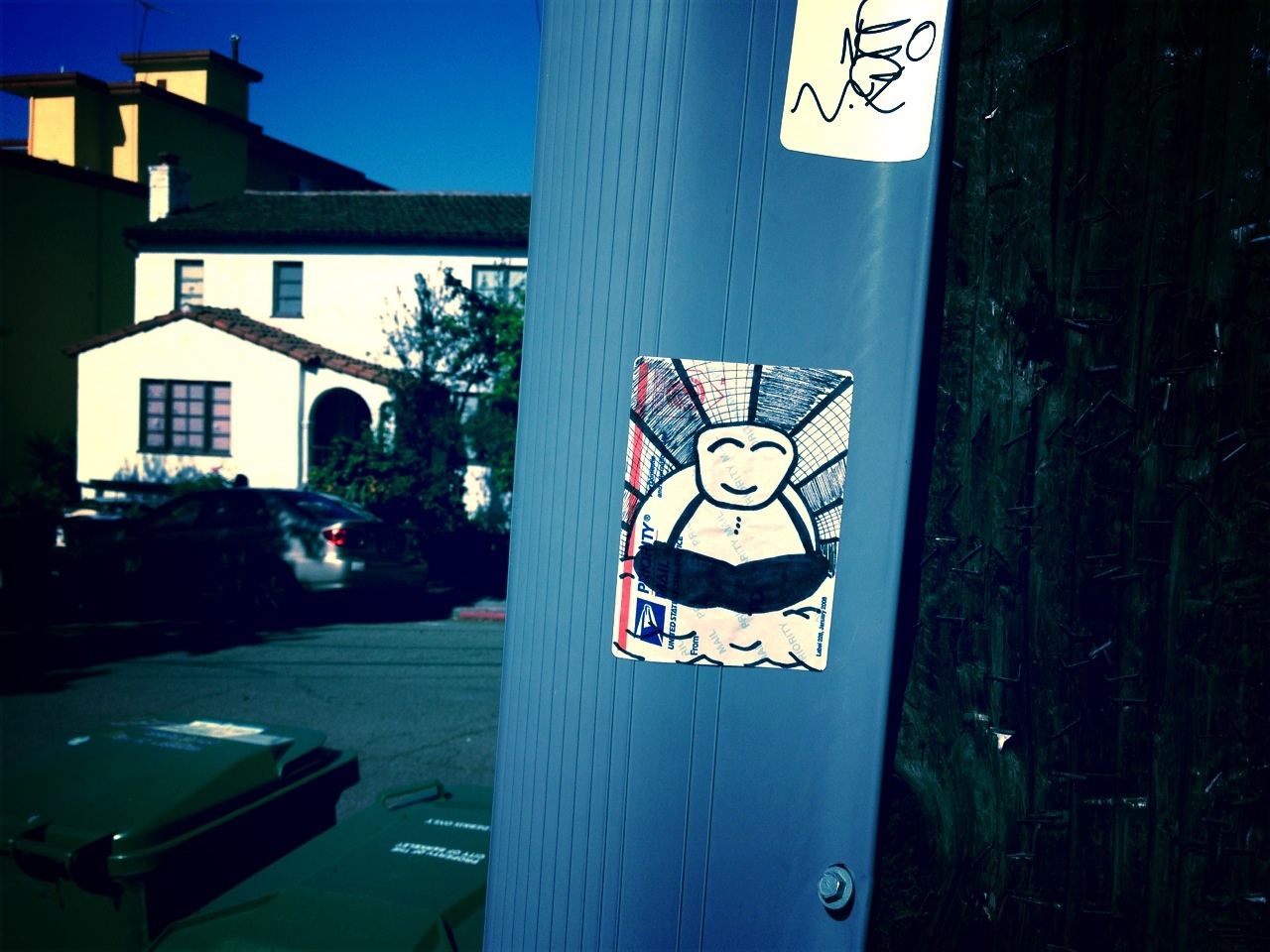In prepping for our last episode on how to do Shin Buddhist practice, we started thinking about why people do practice and the question of motivations. The conversation starts with a reflection on a conference paper Scott heard early in the summer about Buddhism, the self-help industry, and BCA’s “Zen envy” (hat tip to James Dobbins for that awesome phrase!). We talk about what the purpose of Shin and Buddhist practice is in the first place: is it to help create a better self, or a project in radical self-transformation? We meander through questions of ethics, self-critical awareness, and how all this fits into BCA communities today.
Podcast: Play in new window | Download (Duration: 24:12 — 22.3MB) | Embed
Subscribe: Apple Podcasts | RSS


I guess the word I was looking for in this discussion was “bodhicitta” or the “Bodhi mind”. Now I’m admittedly very new to Jodo Shinshu and even Buddhism at large. I believe that Shinran equated Shinjin to the “Bodhi mind” or “bodhicitta” – the aspiration to attain enlightenment for the sake of all sentient beings. Bodhicitta is one of the fundamental keys of Mahayana. One only has to look at the Bodhisattva vows to see how an emphasis on others is more important than any emphasis on “self improvement”. Perhaps this is better described as “self improvement” through a focus on others. In my own experience, I know of no better cure for my own ails than helping others.
I would like to pose the question: who better to generate Bodhicitta than the folks who are engaged with their families and their communities at large, than people involved with a school such as Jodo Shinshu? Certainly as a father and realizing the Mahayana teaching that all beings have at one time been our relatives, the idea of extending my concern for the wellbeing of my family to all sentient beings is not an impossible stretch. Jodo Shinshu offers a path for the everyday Joe to have a family and still make progress on the path to becoming a Buddha, ie. one who has realized the aspiration for enlightenment to benefit all sentient beings. Whether or not this path is realized in this life or the next, I think this aspect should definitely be played up.
Going back to the “Zen Envy” or “Zenvy” statement, I tend to look at people in Jodo Shinshu (and Pure Land at large) as being in a situation of trying to explain/justify their practice to the larger world of people who perhaps came to Buddhism through a different “Dharma Door”. Some people try to find common ground between Jodo Shinshu and Zen practice (which has a much deeper penetration into American popular culture). Others try to find common ground between Jodo Shinshu and “the Historical Buddha”.
With Zen folks, for me the answer has been relatively simple, possibly too much so. I read DT Suzuki’s “Buddha of Infinite Light” shortly before reading Shunryu Suzuki’s “Zen Mind, Beginner’s Mind”. When Shunryu Suzuki says (paraphrasing) “Trying to achieve Enlightenment when having a goal of Enlightenment will get you nowhere, it’s only when you have faith in your practice that you will get anywhere” – lights went off in my head. I immediately thought of Shinran. All of Shunryu Suzuki’s talk of “Big Mind” after that immediately became associated with Amida (for me at least). When you read in the Contemplation Sutra that “it is your mind that becomes Buddha” (depending on translation), it very much has Zen overtones. Reading the Pratyutpanna Sutra, I’m almost reminded of Tibetan Yidam practice, where when one finally sees Buddha, one realizes it’s like a dream (empty), and one realizes the same about one’s self as well. In China, this was rarely an issue, Chan and Pure Land had already reconciled before Buddhism had even gone to Japan.
With people more concerned with the “Historical Buddha”, I am reminded of Bikkhu Bodhi’s “In the Buddha’s Words”, where he states that there were practices geared towards householders. Now, I can quote the Sutta sources if you like for Buddhanussati/Buddhanusmrti, becoming a Sotapanna (stream entry)/Sakadagamin (once returner)/Anagamin (non returner), etc… In fact, the Pali Suttas even talk of Pure Abodes where Anagamis go after death to become enlightened without falling away. The idea is that this is the goal of householders’ practice. It’s based on faith. It involves thinking about the Buddha constantly. The goal is to cut certain fetters that Shinran addresses directly. For a stream enterer (sotapanna) this includes the cessation of doubt (shinjin), the cessation of Self-View (other power), and the cessation of attachment to rites and rituals – for this, I’m reminded of the story where Shinran was going to recite a certain sutra number of times and realized he was displaying a lack of faith; what better example? For an Anagami, the additional requirements are cessation of sensuous craving (Shinran definitely exhibited this in his later years being separated from Esshini) and cessation of ill will, which I don’t think Shinran ever exhibited – both Shinran and Honen made admonitions against harboring ill will towards those who spoke ill of Nembutsu practice. Even if faith is all they have, the Mahapairinibbana Sutta says that followers of the Buddha can attain a heavenly rebirth and throughout the Nikayas it’s said that a devout follower of the Buddha does not fall from heaven, but instead attains the goal. So even Theravadans would recognize Shinran as one who achieved the goal in his next birth.
Certainly in the greater scope of Mahayana, Shin Buddhist practice holds its own. I mentioned Zen separately because Zen practitioners (especially in the west) often hold a lower value for sutra knowledge. With roughly 290 separate Mahayana sutras referencing Amitabha and/or Sukhavati, Pure Land practice is squarely in the realm of Mahayana doctrine (regardless of what Nichiren people say). Pure Land is a major focus of practice in China, Japan, Korea, Vietnam, and even Tibet. Shinran’s take on Pure Land, while revolutionary from its presentation, is still solidly based on Pure Land doctrine at large. Without faith, all but the most virtuous of practitioners are reborn in the calyx of the lotus in the Pure Land, to spend countless years without hearing any teachings from the worthy ones. With faith, even the worst of the worst can quickly hear the teachings of the Bodhisattvas & Amitabha, to quickly become Buddhas (from the Contemplation Sutra).
Even if addressing a Secular Buddhist audience, who would deny any idea of an afterlife, it should be explained that the Jodo Shinshu path would lead to gratitude for one’s life in one’s day-to-day activities and lead to a sense of peace at one’s death. Thinking about a Buddha often provides an aspiration for one to attain, much like positive visualization in sports, especially shadowboxing. If you think about a being of infinite compassion and wisdom, over time you would tend to embody those traits. What one thinks about, one becomes – this is widely accepted among secular skeptics.
Now the apologetic nature of this post is not to dispute Shinran’s thoughts of requirements for entry into the Pure Land, nor to dispute Shinran’s view of the Pure Land as the realm of Nirvana, nor to tell you good gentlemen anything you don’t already know. It’s to show that no matter the flavor of Buddhism, that the Jodo Shinshu path has value, especially for householders – as it seems perfectly geared toward householder capacities. To me, it doesn’t seem hard to use any of these arguments to justify Jodo Shinshu practice.
*sorry for the long post